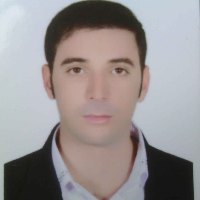Geomatics Analysis and Clustering in Three Archeological Periods of Khonj County Using Variogram1 Method
The spatial analysis became very important in various fields of landscape archeology and statistical analysis. Spatial relationships of archaeological data, patterns created by human activities, their implications for the interior space of archaeological sites as well as their surroundings are studied by spatial archeology. The main purpose of the study is the geometric analysis and clustering of three archaeological periods of Khonj County. The central question of this research is; “What patterns do the spatial distribution of the archaeological sites of the Khonj plain follow based on periodic clustering (prehistoric, historical-Islamic, Islamic) and what factors have played a role in locating these sites?” The present study is a descriptive-analytical. Through field studies, initially, 192 archaeological sites were recorded in three periods of classification and their location (latitude and longitude). By studying the research literature, then, to extract 8 effective indicators (distance from the river, altitude, slope, direction of slope, climatic conditions, vegetation, precipitation, distance from villages) in the distribution of centers and ancient sites in the Khonj County were extracted at the level of 4 identified villages using Delphi technique. The final status of the points was analyzed using the Semivariogram tool in the Geostatistical analyst section with ArcGIS software. Research results show; more than 45% of the areas are scattered at an altitude of 1100-900 meters and on a slope of 5 to 10%, their climate with an average precipitation of less than 100 to 150 mm, temperate climate, and pastures around them can be irrigated. The average area is more than 1 hectare and the average distance from the villages is 3000 meters. On average, the distance from water sources is more than 3 km; the areas are concentrated in the eastern half and partly in the southeastern part of the county.
-
Analyzing the Chapar Khanehs and Post Offices along the Tehran-Anzali Route during the Qajar Period through the Examination of Historical Texts and Archaeological Findings
Fatemeh Abedi *, Ahmad Chaichi Amirkhiz, Kamaleddin Niknami, Hayedeh Khamseh
Iranian Archaeological Research Journal, -
Analysis of the Spatial Structure of Mehri Shrines (Mithraism) in Ancient Iran Based on Archaeological Studies
*, Hamidreza Aryanfar
Journal of Iranian studies, -
Review and Analysis of Iran's scent-bottles in Different Historical Periods
Hamidreza Malahi, *, Samad Nejad Ebrahimi
Journal of Archeology and Archaeometry, Winter 2024 -
The socio-political status of the letter movement in Timurid society
, Homan Mohammadi Sharafabadi
Iranian Journal of Political Sociology,



